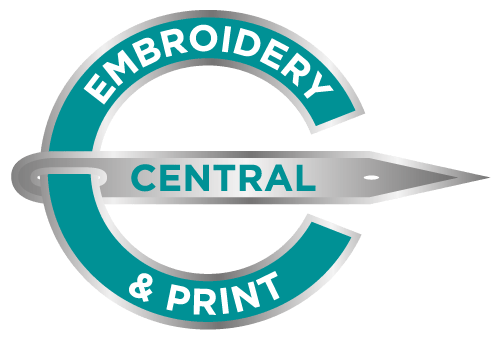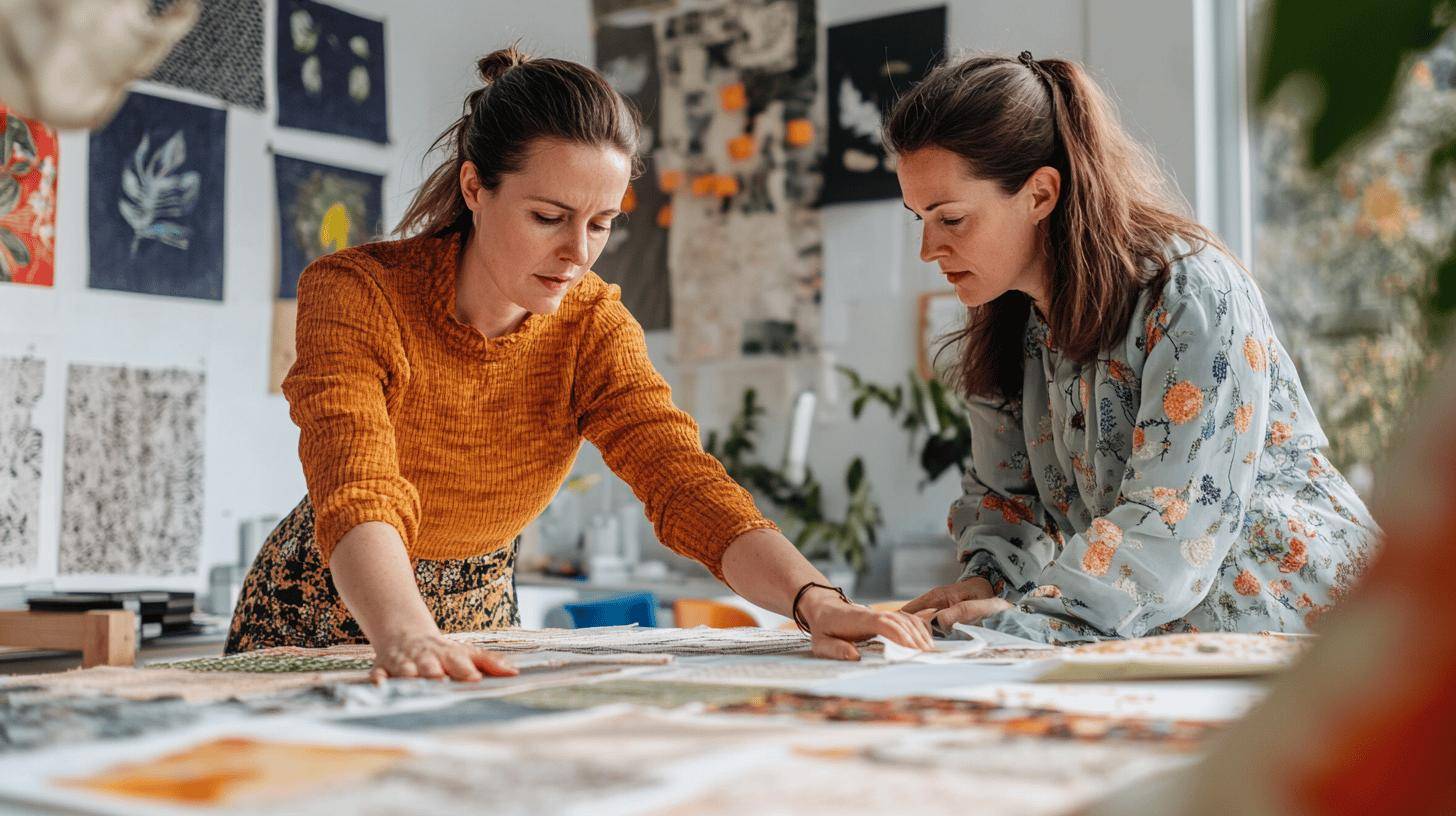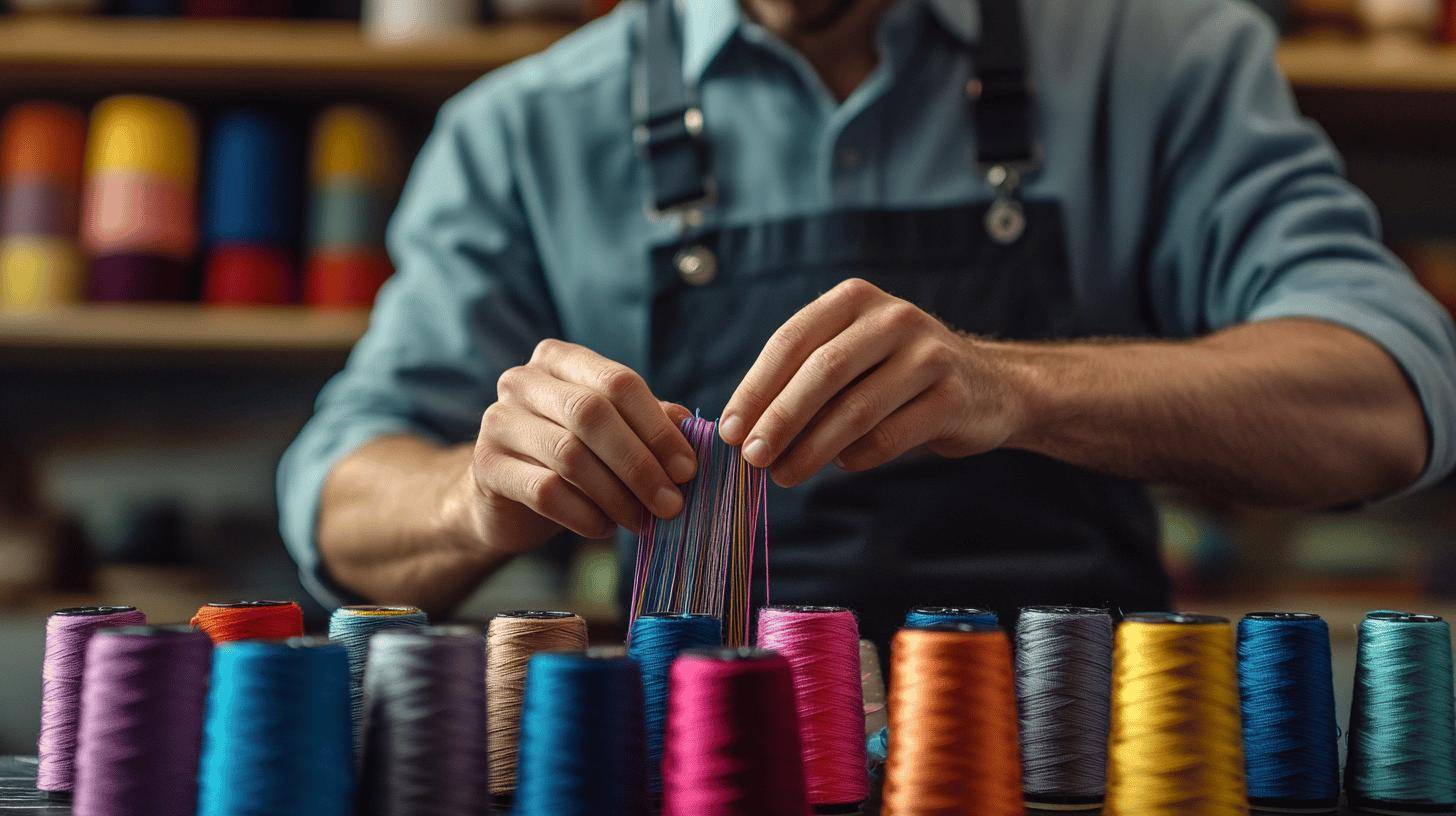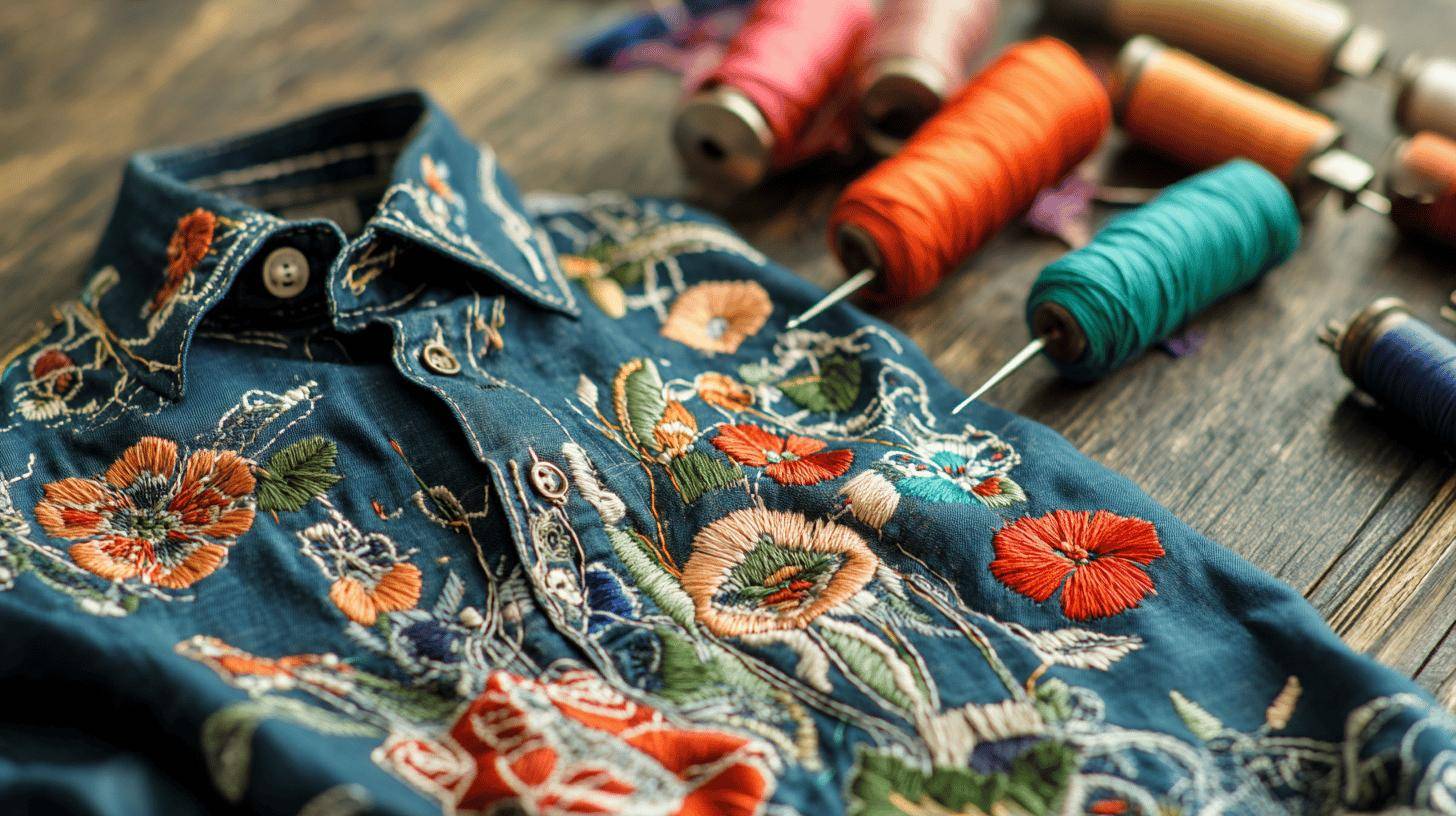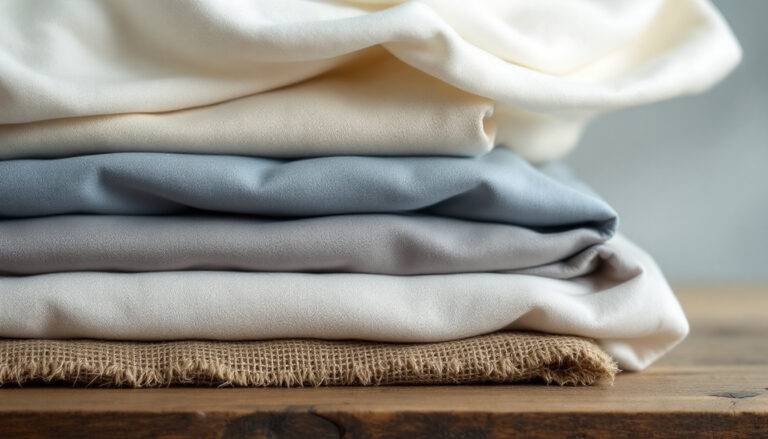In a world where first impressions matter, how often do we overlook the sartorial power of our workwear? Collaborating with designers holds the key to crafting unique embroidered workwear that not only serves a functional purpose but also enhances brand recognition. In this article, we delve into the symbiotic relationship between businesses and designers, exploring creative collaboration as a vital component in developing workwear that stands out. By understanding the importance of designer partnerships, companies can unlock innovative designs that truly reflect their brand identity and keep them ahead in the competitive marketplace.
Understanding the Importance of Designer Collaboration in Workwear
Collaborating with designers is pivotal in crafting unique embroidered workwear that stands out in the marketplace. Designers bring a wealth of creativity and expertise, offering innovative solutions that can transform standard workwear into distinctive pieces. By integrating their artistic vision with technical embroidery techniques, designers can produce workwear that is not only functional but also visually appealing and aligned with the brand’s essence.
Designers play a crucial role in enhancing brand identity and visibility through embroidered workwear. They possess the ability to translate a brand’s story into visually impactful designs, ensuring that the workwear not only meets the practical needs of a business but also communicates its values and aesthetics. This collaboration results in workwear that not only fits but also fits the brand, serving as a mobile advertisement and reinforcing corporate identity through every stitch and detail.
- Enhanced Creativity: Designers bring fresh perspectives and creative ideas that elevate workwear from ordinary to extraordinary.
- Brand Alignment: Collaborations ensure that designs resonate with the brand’s ethos and market positioning.
- Innovative Solutions: Designers provide advanced design techniques and solutions that push the boundaries of traditional workwear.
- Quality Assurance: Expertise in detail ensures high-quality outcomes that are both durable and visually appealing.
- Trend Adaptation: Designers keep brands at the forefront by incorporating the latest trends and innovations in workwear design.
In the collaborative process, the synergy between designers and workwear brands unlocks a level of creativity and innovation that is difficult to achieve independently. This partnership allows for the exploration of cutting-edge design techniques and the development of bespoke solutions that cater specifically to a brand’s unique requirements. By leveraging the designer’s skill set, brands can create workwear that not only serves a functional purpose but also becomes an integral part of their marketing strategy, fostering brand loyalty and recognition.
Steps to Collaborate Effectively with Designers
Collaborating effectively with designers is key to crafting unique embroidered workwear that truly represents a brand’s identity. Through structured communication and strategic partnerships, brands can ensure that their workwear designs are both innovative and aligned with their market goals. Here’s a step-by-step guide to achieving successful designer collaborations.
Establish Clear Design Objectives
The foundation of any successful collaboration is a well-defined set of design objectives. Brands need to articulate their vision and goals clearly. What message should the embroidered workwear convey? This involves not only considering aesthetic preferences but also understanding functional requirements and target audience expectations. By setting these parameters early, both parties can work towards a common vision, ensuring the final product aligns with the brand’s ethos and strategic aims.
Choose the Right Designer
Selecting a designer whose style and expertise match the brand’s aesthetic is crucial. Research potential designers by examining their portfolios and previous work to ensure their design sensibilities align with the brand’s identity. Consider the following: Does the designer have experience in workwear? Do they bring a unique perspective that complements the brand’s image? Choosing the right designer can significantly enhance the creative process, resulting in a more cohesive and effective partnership.
Communicate Effectively
Transparent communication is the backbone of any successful designer collaboration. Establish clear channels and methods for communication from the outset. Regular updates, feedback sessions, and open discussions help maintain alignment and address any challenges promptly. Consider using collaborative tools like project management software to streamline communication and keep all stakeholders informed. Effective communication not only facilitates smoother project execution but also strengthens the partnership.
Foster a Collaborative Environment
Creating an environment that encourages creativity and mutual respect is essential for a productive collaboration. Encourage designers to experiment and propose innovative ideas, while providing constructive feedback that respects their expertise. Building a culture of trust and collaboration fosters a sense of shared ownership in the project, leading to more innovative and refined outcomes. By valuing each other’s contributions, brands and designers can achieve a harmonious and successful partnership, resulting in unique and impactful embroidered workwear.
Exploring Unique Embroidery Techniques for Workwear
Embroidery techniques play a crucial role in enhancing both the aesthetics and functionality of workwear. Customised embroidery techniques provide brands with the opportunity to create distinctive and personalised designs that align with their identity. Techniques such as 3D embroidery and appliqué not only add depth and texture but also create a high-end, tailored look that resonates with the brand’s ethos. These techniques allow for the use of varied thread types, colours, and stitching patterns, resulting in workwear that stands out in any professional setting and reinforces brand visibility.
The embroidery design process is also instrumental in adapting to workwear trends and innovations. Keeping abreast of embroidery trends like eco-friendly threads and digital embroidery ensures that workwear remains contemporary and relevant. Custom embroidery techniques enable brands to experiment with new materials and designs, offering unique branding opportunities that differentiate them from competitors. By strategically selecting and employing these techniques, companies can craft workwear that not only meets functional demands but also serves as a powerful marketing tool.
Case Studies: Successful Designer Collaborations in Workwear
Case Study 1: Stella McCartney and Adidas
Stella McCartney’s collaboration with Adidas showcases the power of designer-led workwear initiatives in sports and activewear. By merging McCartney’s innovative design approach with Adidas’s technical expertise, this partnership resulted in a collection that was both functional and fashion-forward. The use of eco-friendly materials and sophisticated embroidery techniques highlighted the brand’s commitment to sustainability while maintaining performance standards. This collaboration significantly enhanced Adidas’s brand identity, positioning it as a leader in sustainable sportswear.
Case Study 2: Virgil Abloh and Levi’s
Virgil Abloh’s collaboration with Levi’s exemplifies creative collaboration methods that redefined traditional workwear aesthetics. By incorporating his signature streetwear influence, Abloh transformed classic denim pieces with unique embroidery patterns and bold design elements. This partnership not only revitalised Levi’s iconic image but also introduced the brand to a younger, trend-conscious audience. The innovative use of embroidery added a contemporary twist to timeless designs, reinforcing Levi’s reputation for quality and style.
Case Study 3: Alexander Wang and H&M
The collaboration between Alexander Wang and H&M demonstrates how designer workwear projects can bridge the gap between high fashion and everyday apparel. Wang’s influence brought a sleek, modern edge to H&M’s workwear line, integrating technical fabrics and minimalist embroidery designs. The collection’s success was marked by its ability to blend functionality with avant-garde aesthetics, attracting a diverse customer base. This partnership not only elevated H&M’s brand image but also showcased the potential of designer collaborations to create accessible yet unique workwear solutions.
Choosing the Right Materials for Embroidered Workwear
Selecting the right materials for embroidered workwear is essential as it directly impacts the garment’s durability, appearance, and functionality. The choice of fabric affects not only how the embroidery appears but also how the clothing performs in various work environments. For instance, heavier fabrics like cotton canvas offer excellent durability for industries requiring robust workwear, while lighter materials such as polyester blends may provide better comfort and breathability. Understanding the specific demands of the work environment and how different materials respond to embroidery is crucial in making informed decisions. Additionally, the fabric’s texture and weave play a significant role in how well it holds the embroidered designs, influencing the overall aesthetic and longevity of the workwear.
- Durability Requirements: Choose materials that can withstand the wear and tear specific to the industry.
- Comfort and Fit: Ensure the fabric offers comfort for the wearer without compromising on the fit.
- Design Compatibility: Select materials that complement the embroidery technique and design intricacies.
- Environmental Impact: Consider eco-friendly options to align with sustainability goals.
Consulting with fabric and embroidery experts can further refine the material selection, ensuring alignment with both design and performance requirements. These professionals can provide insights into the best fabrics for specific embroidery techniques and help navigate the complexities of balancing aesthetics with practical considerations. Engaging with experts early in the design process not only enhances the quality of the embroidered workwear but also optimises its functionality and appeal.
Trends and Innovations in Embroidered Workwear Design
In the dynamic world of embroidered workwear design, staying ahead of trends and innovations is crucial for maintaining competitiveness. Recent developments in the industry focus on the integration of eco-friendly materials, which not only meet environmental responsibilities but also appeal to the growing consumer demand for sustainable products. Innovations in technology have also made significant strides, with smart fabrics integrating features such as moisture-wicking and temperature regulation, enhancing the functionality of workwear. Artistic embellishments have gained popularity, allowing brands to experiment with unconventional designs and textures that set their workwear apart. These trends influence not only the aesthetics but also the practicality and consumer appeal of embroidered workwear.
- Eco-friendly Materials: Adoption of sustainable fabrics and threads.
- Smart Fabrics: Integration of technology for enhanced functionality.
- Artistic Embellishments: Use of unique textures and designs.
- Digital Embroidery: Precision and intricate detailing through technology.
- Customised Patterns: Tailored designs that align closely with brand identity.
Looking forward, the future of embroidered workwear will likely continue to embrace these innovations, along with emerging technologies like 3D printing and augmented reality design. These advancements promise to further personalise and enhance workwear, offering brands new ways to express their identity and meet the evolving needs of their workforce. As brands increasingly prioritise sustainability and innovation, the landscape of embroidered workwear design will continue to evolve, creating opportunities for more dynamic and responsible fashion solutions.
Final Words
Embracing collaboration with designers elevates embroidered workwear through enhanced creativity and brand visibility. By understanding the steps to collaborate effectively, enterprises can harness the full potential of design partnerships, ensuring alignment with brand objectives. Customised embroidery techniques further personalise these efforts, offering distinctiveness and functionality.
Real-world case studies demonstrate the impact of successful collaborations, providing inspiration and practical insights. Selecting suitable materials and keeping pace with evolving trends ensures the longevity and relevance of products. Overall, collaborating with designers strengthens brand identity and opens doors to innovative embroidered workwear solutions.
FAQ
Q: Why is collaboration with designers important in workwear design?
Collaborating with designers is pivotal in creating unique and sophisticated workwear designs. Their expertise enhances brand appeal and identity through creative and innovative embroidery solutions. Such partnerships unlock bespoke design opportunities.
Q: What are the benefits of designer collaboration in creating embroidered workwear?
Key benefits of designer collaboration include:
- Enhanced brand identity and visibility
- Access to innovative design solutions
- Improved product aesthetics and functionality
- Competitive differentiation in the market
- Tailored solutions aligned with brand vision
Q: How can effective collaboration with designers be achieved?
Achieving effective collaboration entails:
- Establishing clear design objectives that align with the brand vision
- Choosing designers who match the brand’s aesthetic
- Maintaining open and transparent communication
- Fostering a collaborative environment that encourages mutual respect and creativity
Q: What embroidery techniques can enhance workwear aesthetics?
Employing varied embroidery techniques can significantly uplift workwear aesthetics. Techniques such as 3D embroidery, appliqué, digital embroidery, and chain stitch offer personalised branding and distinct design opportunities, catering to specific aesthetic needs.
Q: How does material selection impact embroidered workwear?
Material selection is critical as it influences durability, appearance, and functionality. Consulting experts ensure the choice of fabrics aligns with design goals and performance standards, resulting in superior workwear quality and resilience.
